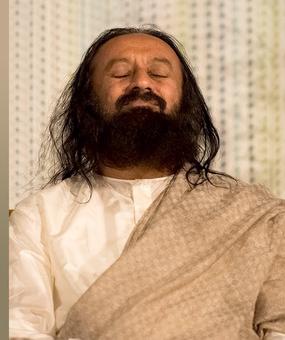When Should I Sleep?
Dharma is the nature. The body has its Dharma. If the body wants to sleep you have to provide it with rest. But what do we do if the body wants to sleep? We put on the television because of an interesting movie. We are going against the body. The body has its demands; we must listen to the body.
How Much Should I Sleep?
There are four sources of energy:
-
Food: In ancient India, if someone was behaving funny, people would ask, ‘What did you feed him?’ or ‘What did you eat?’ Instead of asking, ‘Why are you behaving like this?’ This is true in some way. Food is the first source of energy.
-
Sleep: Any sane person, if you do not let him sleep for two days, he will not be normal. There will be a drastic change in his or her behaviour. So sleep or proper rest is important.
-
Breath: is the third source of energy. A few minutes of breathing and some yoga can energize the body and the mind, and uplift the spirit.
-
A happy mind: a comfortable mind is much more calm and collected. A few minutes of meditation makes the mind happy and comfortable.
You need a good amount of sleep, at least six to eight hours of sleep. When you have some passion, when you have a purpose in life then nothing else matters. You know you will find your energy from within, but still take the time to sleep, to rest. Sleep is very important.
How to Prepare for Sleep
Usually, when we go to bed, we think of all the things we didn’t have, all the things that we have failed in. Just before going to bed, if you keep remembering only your failures and your disappointments, or what someone said to you, then all that gets into your subconscious mind. This is what we sow and then we sleep. And then in the morning you wake up and you feel tired, exhausted, negative and frustrated.
But in the night if you think and put your attention on all your achievements or on the positive aspects of life. Think good thoughts and good wishes. Think about the good moments and then go to bed. Or say a prayer. Prayer is to think about what I am so grateful for in my life.
Put these kinds of thoughts out there. Put them in the space. Then you relax and go to sleep. When you wake up in the morning you will feel very fresh and alive. If you put your positive thoughts as seeds before you go to bed and then when you wake up, you will feel very fresh.
Make a conscious effort to create this habit. This is how to lead a successful life. The secret is to keep sowing the positive seeds in the space. And how do you do that? Breathing and meditation. Then all this happens!
12 Easy Tips to Fall Asleep Quickly
-
Drop “Quickly”: The number one obstacle is the anxiety that I want to sleep quickly. This can keep us awake! Drop that “quickly”, then you will fall asleep.
-
Don’t Eat Late: The second is a late dinner or a high metabolic rate. The right amount of food will help – not too heavy; not too light.
-
Do Pranayama: What would help is some breathing, some pranayama. This will definitely help. Also, deep breathing will help you. A little bit of yoga will help.
-
Meditate: Meditation helps of course. Do more meditation. Meditate several times. (To learn meditation, click here)
-
Drop the Past and the Future: The third is worries. You are anxious about tomorrow or bothered about past incidents. The memory of the past or being anxious about the future is one of the root causes of lack of sleep
-
Yog Nidra: If you can’t fall asleep do Yog Nidra. Lie down and put Yog Nidra on the Art of Living app or on Gurudev’s channel. Take your attention to different parts of the body. This will help you to fall asleep
-
Listen to Light Music: Nonverbal light music and instrumental music will also help. Feel that music is passing through your whole body. Just lie down and listen to some instrumental music, music which you’re not very familiar with. If you play familiar music, you’ll start singing and chanting with this. But if you take some unfamiliar light music that can also put you to sleep.
-
Drink Milk: A little bit of warm milk or even cold milk before bed also seems to help many people.
-
Power Off to Power Down: Of course, switch off your electronic devices much earlier than bedtime, at least an hour before bed. Have a phone curfew from one hour before going to bed to one hour after you wake up.
-
Do Hard Work: Someone, who is tired after a day of hard work will sleep well even if there are mosquitoes. Forget mosquito bites, even rat bites will not disturb his or her sleep! But if you waste time during the day, then you will not be able to sleep at night even if you have a soft, comfortable bed. You toss and turn, and one mosquito’s buzz will keep you awake. The mosquito is not responsible for your sleepless night. Your laziness will not let you sleep. If you lie in bed since morning, how can you sleep at night? People who oversleep cannot enjoy sleep, but those who work hard and tire themselves out in the fields find satisfaction when they go to bed.
To learn more about powerful techniques to help you relax and sleep better, sign up for “The Art of Living Workshop to Get Rid of Anxiety & Sleep Disorder.“
Bonus: Sleep and Manifestation
Suppose you have a wish in the night. You want to drink some tea or water or juice and then you don’t do it but you go to bed. What happens in the night? In the dream, you keep drinking or you cannot sleep deeply.
To get a good sleep, what do you need to do? Let go mentally. When you let go, the secret is your wish gets fulfilled.
If you are holding on to the wish, it doesn’t get fulfilled. What do you need to do? You have a wish. Give that to your Guru, to a higher power and relax. Only when you let go, you are able to relax. You can be in your true nature.





















